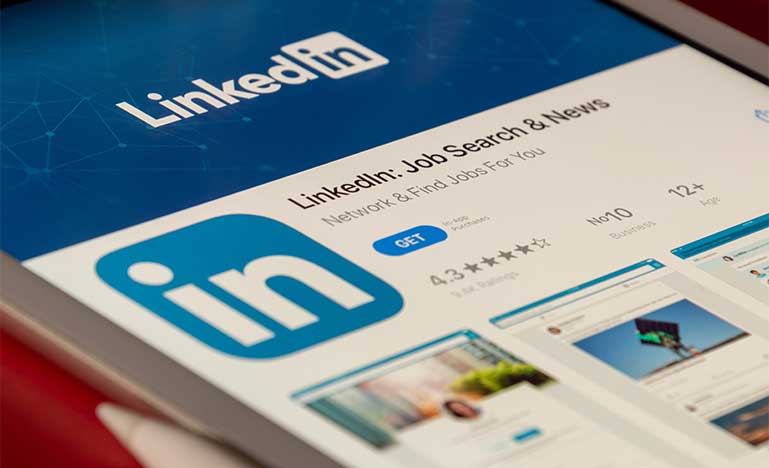Making the most of your LinkedIn profile
A few tweaks go a long way to make you stand out on this professional social network.

When’s the last time you took a good look at your LinkedIn profile? I mean really looked at it?
If you find yourself wondering why LinkedIn hasn’t helped you expand your professional network yet, a good place to begin turning things around for yourself would be your profile. It’s where first impressions are made. It’s also the gateway to being found on searches. It’s worth making the time to improve it.
Here are a few examples of what might be missing or need extra work:
- Do you need to freshen up titles and descriptions, to reflect your current practice?
- Do you need to add information, to present a more complete and accurate history of yourself and your career?
- Do you need to reposition your message, to better connect with your ideal clients?
Best practices
As you consider updates and improvements to your LinkedIn profile, bear in mind that you can optimize your content for the LinkedIn search engine, similarly to how you would optimize web content for Google and other search engines. So before you get started, select keywords expected to align with your preferred files or referrers, and use them throughout your profile.
An example of a keyword would be “estate litigation Toronto.” You can insert this phrase into your profile headline, into headings in your “about” section and even weave it into the descriptions for individual jobs in your work history. Be sure to include variations, such as “estate lawyer,” so your text doesn’t sound unnatural.
To go a step further with your efforts to optimize, you can personalize the URL of your LinkedIn profile to include a priority keyword or phrase.
Expanding on the previous example, your URL could be “JoeSmithEstateLitigationToronto.” Note that you have up to a maximum of 100 characters and that LinkedIn doesn’t allow spaces, symbols or special characters for this URL. Be creative!
Headline
If you were given free advertising space in a publication that had the potential to reach your entire professional network, including second- and third-degree connections, would you use your job title as the headline? “Family Law Mediator, Toronto” is an accurate job title but it’s not very catchy. Treat your LinkedIn profile as your biography. Combine your job title, your keywords and a tagline that focuses on a point of difference or benefit delivered to your clients.
Headshot
Your picture tells a story. What’s yours? Your facial expressions, body language, attire and background can give people the sense that you’re friendly, or maybe you want your picture to make you look like a formidable litigator clients need to have in their corner, or perhaps you prefer appearing more formal. These are all good options; pick the one that suits you best, communicate it to your photographer and let them do the rest. Take a tour of other lawyers’ profiles, especially the ones you consider successful. What can you learn from their headshots that you can apply to yours?
Banner
The default LinkedIn banner is a blank rectangle. You can use this space to stand out from the digital clutter with an impactful message that ties the visual presence of your profile to the rest of your marketing. Upload an image, a branded background, a tagline or a call to action to say something strategic about your practice.
An example of how to do this would be to use a photo or yourself, or your team, delivering a speaking engagement.
Contact information
Keep your contact details up to date and watch out for typos. Refer to your professional, not your personal, contact details. Include everything the form calls for, including a phone number, address, email, links to your website, blog and twitter handle if you have one. The only exception is your birthday. Be aware that if you enter it into the form, all your connections will be notified on your big day. Unless that is something you want, better leave this line blank.
About
Treat this section like a static version of an elevator pitch. Use it to introduce yourself. What do you do? For whom? How do clients benefit? What do they value about your professional services and style? How do you handle referrals? Who should contact you and for what purpose?
Featured
A featured section can add visual interest close to the top of your profile. This is where you would showcase high profile interviews, presentations, publications or even a video introduction to your firm.
Work experience and education
Complete your job and education history, so both colleagues and past classmates who search for people they may know at those institutions and companies can find you.
Licenses and certifications
Here you may list any credentials that fall under the category of certification, rather than purely academic accomplishments. An example of an appropriate entry in this section would be a certification as a “Qualified Mediator.”
Volunteer work
Your volunteer work builds goodwill and communicates your values. Use this section of your LinkedIn profile to highlight contributions to both your profession and your community. An example of a suitable entry for the volunteer section would be your participation on a special committee of a professional body like the CBA.
Endorsements
LinkedIn allows you to select up to 50 skills that describe your expertise. If you don’t choose for yourself, others may endorse you for skills that are not in line with your professional goals. Be sure to list options that match your priorities.
Recommendations
Recommendations are LinkedIn’s version of testimonials. When someone gives you a recommendation, it gets added to your profile, which means it is visible to all your connections. It also gets added to their profile, making it visible to all their connections. Build this section by making a habit of asking for, and giving recommendations on a regular basis, at appropriate milestones in your client work. Npte, however, that Quebec's professional conduct code states that: "In his advertising, a lawyer may not use or allow to be used an endorsement or statement of gratitude concerning him."
Accomplishments
In the accomplishments section, you can add any of the following subsections: Publications, Patents, Course, Projects, Honours and awards, Test scores, Languages, Honours and Organizations. Only the portions you fill in will appear on your profile. You will notice that LinkedIn does not have a specific location to list speaking engagements. An option would be to enter them under “Honours and awards.”
Conclusion
Improving your LinkedIn profile can be a rather large undertaking. Rather than approaching it all at once, consider dividing the job into smaller tasks. After the first few changes, you will begin to see the difference a more strategic, accurate and current picture of your professional identity and history can make.
Sandra Bekhor is a practice development consultant and coach with Bekhor Management. You can reach her at consults@bekhor.ca.


